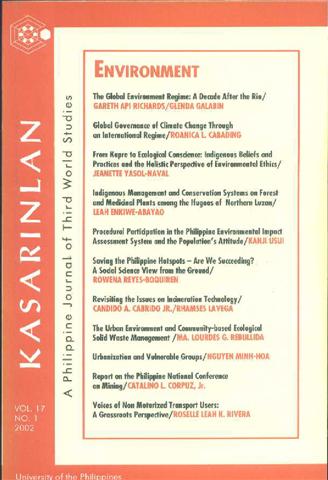Revisiting the Issues on Incineration Technology
Abstract
The phase-out after three years and the eventual ban on all types of incinerators as stipulated by the 1999 Clean Air Act evoked howls of protests from users, manufacturers, government agencies and environmental technologists. NGOs, led by Greenpeace, lobbied in Congress for the total ban citing the negative effects of the use of incinerators on health and environnent. However, those who are against the total ban policy contended that the old model incinerators are the ones causing hazardous emissions and that the problem can be remedied by the use of modern incinerators. Banning incinerators could create more problems as industries andhospitals will be left with no means to properly dispose their toxic and hazardous wastes (THWs). The alternative methods to effectively treat THWs are not yet commercially available locally and are quite expensive to import. The readily available alternative methods are not that effective in disposing THWs. With the ban, hospitals and industries may either continue using their old incinerators clandestinely or dispose their THWs untreated or ineffectively treated together with other solid wastes; thus multiplying the health and environmental problems which the ban originally sought to address. The government should, therefore, rethink its decision to include modem incinerators in its incineration ban.
Published
2008-09-17
How to Cite
CABRERA, Candido A.; LAVEGA, Rhamses.
Revisiting the Issues on Incineration Technology.
Kasarinlan: Philippine Journal of Third World Studies, [S.l.], v. 17, n. 1, sep. 2008.
ISSN 2012-080X.
Available at: <https://journals.upd.edu.ph/index.php/kasarinlan/article/view/1064>. Date accessed: 24 aug. 2025.
Section
Research Reports
Keywords
Incineration; Incineration Ban; Clean Air Act; Greenpeace; Garbage Disposal
By submitting a manuscript, the authors agree that the exclusive rights to reproduce and distribute the article have been given to the Third World Studies Center.



